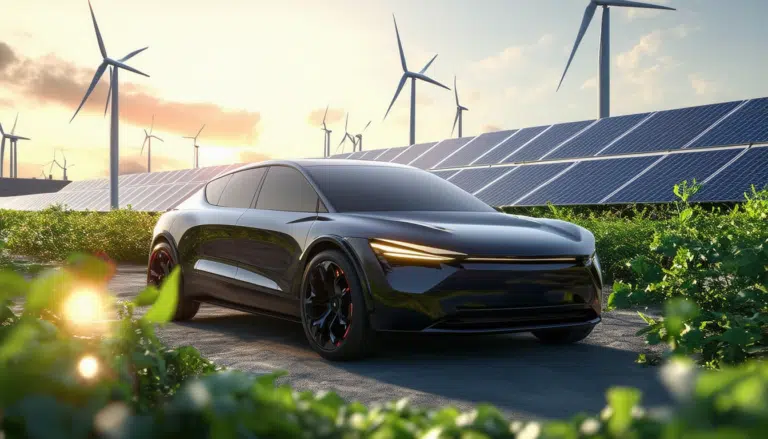The largest engine designed by leading automotive companies

In the world of automotive engineering, advancements are not only limited to the creation of efficient and environmentally friendly engines but also to the conception of gigantic engines that astonish with their size and capacity. Large companies have led the innovation in this field, developing colossal machines that not only move vehicles but also propel the industry towards new frontiers. These engines represent a technical feat that combines power and durability, standing out in sectors such as merchant marine, where their performance is crucial for the large-scale transportation of goods.
In the vast world of automotive engineering, engines not only symbolize power and performance but also a triumph of technology. This article focuses on the most imposing engines ever designed by leading automotive companies. From the giants used in the maritime sector to those that redefine the limits of luxury cars, we explore the colossal engines that symbolize the pinnacle of mechanical engineering.
The Wärtsilä-Sulzer RTA96-C: The Colossus of the Sea
One of the most impressive engines ever created is the Wärtsilä-Sulzer RTA96-C. This titan is a two-stroke turbocharged diesel engine, specifically designed to propel some of the largest container ships in the world. With a structure that reaches 13.5 meters in height and 27.3 meters in length, this engine can generate an incredible power of up to 107,389 horsepower (80,080 kW) at 102 revolutions per minute. Its ability to move large vessels across kilometers of ocean makes it an icon of modern engineering.
The excellence of its design lies not only in its size but also in its efficiency for transporting goods. Designed to optimize fuel consumption, this engine is crucial for global trade, enabling the transport of up to 72,000 tons of cargo.
The Giants of the Automotive Industry
In the world of combustion engines in cars, some of the most recognized brands have achieved remarkable feats. For example, Chevrolet demonstrated its capability by creating the ZZ632/1000, the largest and most powerful engine in its history. Equipped with a forged rotating assembly and four-bolt main caps, this engine withstands the rigors of multiple endurance tests, symbolizing the durability and power that represent Chevrolet’s legacy.
Additionally, car manufacturers like Ferrari have constantly innovated, patenting revolutionary engines like the oval-cylinder V12, an example of how competition within the industry continues to raise the standard of what is possible.
The Future of Combustion Engines
Despite the growing popularity of electric engines, combustion giants are not ready to relinquish their throne. Significant investments in innovation are underway to adapt these impressive engines to new environmental regulations. One example is Mazda‘s gasoline rotary engine, which promises a promising future for hybrids.
Moreover, automotive companies see Spain as an opportunity to revive the future of combustion engines, with a giant in the sector ready to invest in its rebirth. This highlights how leading brands continue to develop advanced engines that could change the landscape of global mobility.
Towards a New Era of Motorsport
On the other hand, in the realm of motorsport, automotive companies’ commitment to innovation is also manifested. General Motors, for instance, announced its participation in the 2026 world championship with the Cadillac team, highlighting its dedication to compete globally while continuing to refine its automotive technologies.
In summary, the largest engines designed by leading automotive companies not only demonstrate the incredible power of today’s technology but also point to a future of continuous innovation. As the demands of the global market change, these giants of the engine are ready to adapt, ensuring their place in the history of automotive engineering.
The Impact and Future of Giant Engines in the Automotive Industry
The development of huge engines is not only an engineering feat but also a testament to technological advancement in the automotive industry. Leading companies in the sector have invested significant resources in creating engines capable of withstanding massive demands, powering vehicles from the most luxurious to the titans of maritime transport. The Wärtsilä-Sulzer RTA96-C, the largest combustion engine in the world, is an impressive example of the capacity that technological advances have achieved, demonstrating exceptional power figures.
Its design not only responds to the need to move enormous container ships but also reflects the constant pursuit of efficiency and durability. The colossal structure that supports titanic dimensions and performs with astonishing output power presents the limits of what can be achieved by combining meticulous engineering and innovation. This giant, with its cutting-edge technology components like the 300-ton crankshaft, redefines the concept of power in the automotive and maritime industry.
In terms of application, these engines stand out globally for their crucial role in international trade. They contribute to the economic ecology by facilitating the transportation of large volumes of products and materials. Looking to the future, the development of even more efficient and sustainable engines is inevitable. The progress in creating engines using alternative fuels becomes an unavoidable imperative as the industry seeks to balance power with environmental impact.
The race towards larger engines consists not only of expanding capabilities but also of integrating innovative solutions that ensure the future viability of the automotive sector in a global context. Thus, the industry finds itself in an exciting period of evolution, marked by the challenge of improving sustainability without sacrificing performance.





